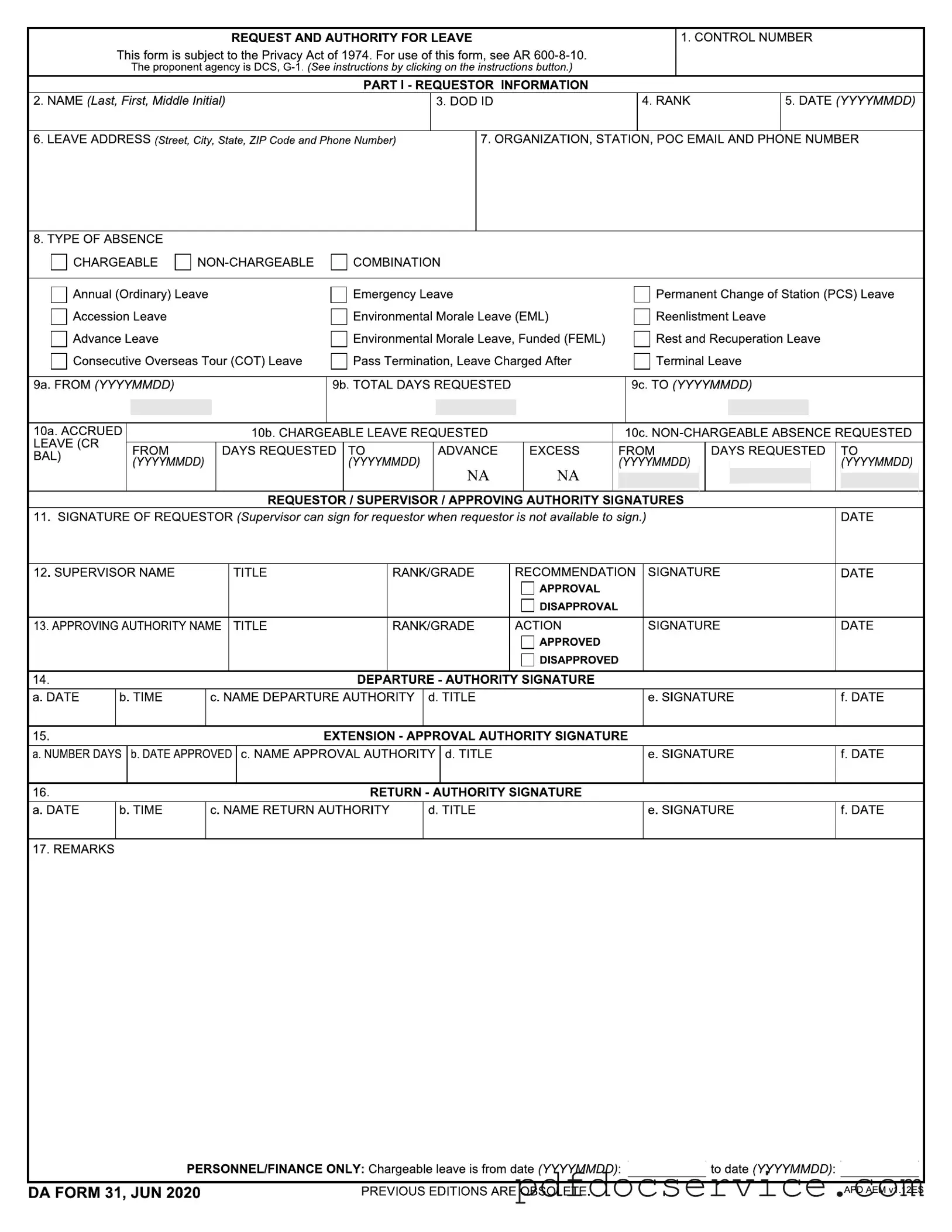The DA Form 31, also known as the Request and Authority for Leave, is a document used by military personnel to request leave from duty. This form captures essential information about the requestor, including their name, rank, and the type of leave being requested. It is a crucial part of the leave process and must be filled out accurately to ensure proper approval.
Any service member seeking to take leave must complete the DA Form 31. This includes active duty, reserve, and National Guard personnel. The form must be filled out by the individual requesting leave, although a supervisor can sign on their behalf if the requestor is unavailable.
The DA Form 31 allows for various types of leave requests, including:
-
Annual (Ordinary) Leave
-
Accession Leave
-
Advance Leave
-
Emergency Leave
-
Environmental Morale Leave (EML)
-
Permanent Change of Station (PCS) Leave
-
Reenlistment Leave
-
Rest and Recuperation Leave
-
Consecutive Overseas Tour (COT) Leave
-
Terminal Leave
Each type of leave has different regulations and implications, so it’s important to select the correct option when filling out the form.
After completing the DA Form 31, you must submit it to your supervisor for approval. The supervisor will review the request and either approve or disapprove it. Once approved, the form is forwarded to the appropriate authority for final approval. Keep a copy for your records, as it may be needed for future reference.
You will need to provide several pieces of information on the DA Form 31, including:
-
Your name (last, first, middle initial)
-
Your DOD ID number
-
Your rank
-
The dates of your requested leave
-
Your leave address and contact information
-
The type of absence you are requesting
Accurate information is essential to avoid delays in processing your leave request.
What happens if my leave request is denied?
If your leave request is denied, your supervisor should provide feedback on the reasons for the denial. You may have the option to revise your request or appeal the decision, depending on the circumstances. It’s important to communicate with your supervisor to understand your options moving forward.
